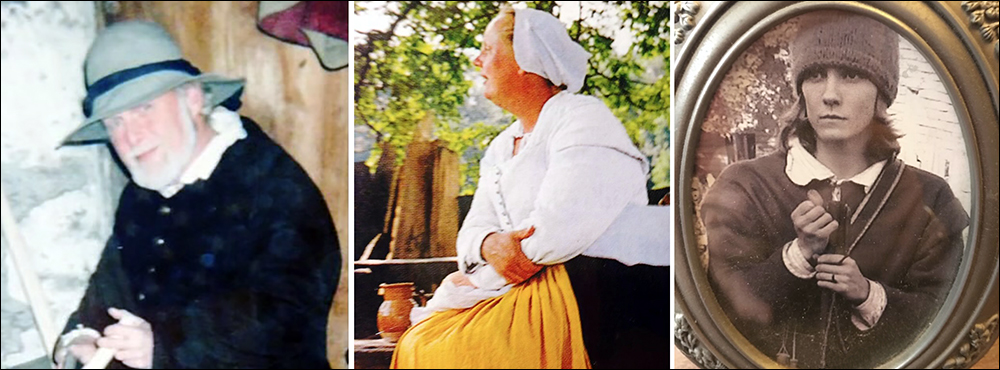Nov 23, 2021A week from today, it will be Thanksgiving in the United States—or, as the rest of the world will call it, Thursday. On that day, Americans will feast on too much roast turkey, mashed potatoes, stuffing, green beans, corn, cranberry sauce, pie and other delicious dishes, accompanied by glasses of pinot noir, zinfandel, riesling or sauvignon blanc. Many will then loosen their belts, collapse into chairs, and snore (which is often attributed to the L-tryptophan levels in the turkey meat but is more likely caused by increased blood flow to overfull stomachs). As a child in the 1970s, I was less interested in turkey than in the fact that television stations aired The Wizard of Oz, Godzilla and Babes in Toyland. I still am, though now I can watch them on Blu-ray.
 What few Americans consider on Thanksgiving is that before food reaches their table, it must traverse the supply chain, from raw materials sourcing to production, processing, packaging, storage, distribution and sale to consumers. For the average person, a holiday dinner is something to enjoy as a family, but for farmers, manufacturers, warehouses, transportation and logistics companies, stores and supermarkets, it means operations increasing by several magnitudes, with more opportunities for supply chain problems to arise.
What few Americans consider on Thanksgiving is that before food reaches their table, it must traverse the supply chain, from raw materials sourcing to production, processing, packaging, storage, distribution and sale to consumers. For the average person, a holiday dinner is something to enjoy as a family, but for farmers, manufacturers, warehouses, transportation and logistics companies, stores and supermarkets, it means operations increasing by several magnitudes, with more opportunities for supply chain problems to arise.
Before you eat your Thanksgiving meal—or any meal, actually—a lot must happen. Vegetables, fruits, grains, herbs, etc., need to be grown, harvested, processed and packed. The cows, chickens, turkeys, pigs and other animals that end up as meat on your plate need to be birthed, raised, fed, weighed, health-monitored, slaughtered and prepared, with a great deal of labor required at each step along the way. For foods like stuffing mix, dinner rolls, canned cranberry sauce and pie shells, the ingredients need to be combined as final products for sale to hungry shoppers. And the packaging in which all of this is delivered to you, the consumer, needs to be manufactured in factories.
Throughout all of this, the food needs to be transported from one stage to the next, either by truck, rail, boat or plane, and it has to be monitored, whether automatically or manually. A lot goes on before the smell of succulent turkey wafts through the house while Grandpa hogs the TV remote to watch football as the generations engage in a heated debate about whether or not Thanksgiving should even be celebrated, given its not so bloodless roots.
At any point along that supply chain, things can go wrong. Animals can become ill, infect others in the herd and end up unusable as a food source. Crops can receive too little or too much moisture or sunlight and perish before harvest time. A lack of transparency, authentication, proper management and accurate reporting can result in goods becoming lost or stolen, or they might reach their expiration dates due to any number of delays, requiring that they be discarded instead of sold.
Productivity and profitability can be severely hampered by supply chain inefficiencies, causing time, money and resources to be wasted, which leads to unhappy companies and dissatisfied customers. If the supply chain falls apart at Thanksgiving, it means 20 or 30 people eating pizza and fast-food burgers on fancy dinner plates while drinking soda out of wine glasses, with Oreos for dessert. Thankfully, Internet of Things technologies exist to optimize supply chain management, enabling folks to stuff themselves beyond capacity with all the traditional foods, and to feel self-conscious and queasy afterwards.
RFID and other IoT devices can monitor and report on goods from farm to fork—tracking animals' health on farms, monitoring soil moisture and temperature levels, preventing theft and misplaced items during transport, boosting inventory accuracy, enabling cashless purchases and more. Supply chain members can share information collected via RFID and gain real-time visibility into inventory and stock levels, while analytics software, machine learning and artificial intelligence can identify bottlenecks, reduce the incidence of errors and eliminate waste throughout the entire supply chain.
My family is among those who probably never give this any thought. However, we have a unique connection to Thanksgiving worth noting, as my parents and brother spent years working as costumed interpreters at the Plimoth Plantation (now called Plimoth Patuxet Museums). They studied and learned an enormous amount of history about the Pilgrims, trained to speak with the proper accents, and remained in character while entertaining visitors with the history of how the colony was formed following their long sea voyage from England to the New World aboard the Mayflower.
For the historical Pilgrims they portrayed at the museum—which, for my father, included one of our own ancestors—it perpetually remained the 1620s, and the first Thanksgiving (or, at least, what we traditionally call the first Thanksgiving, even though the custom predated the Plimoth colony) had happened within their lifetime. Everything the staff did, from the growing of crops to the rearing of animals and the repair of the village's dwelling-houses, involved authentic technologies and tools from 400 years ago. They enjoyed it immensely, but it was exhausting and sweaty work.
If only the Pilgrims (and my parents) had been able to optimize processes via RFID. They could have saved time and energy moving all their food from the fields into the kitchens of their dwellings, and that would have enabled them to spend Thanksgiving mornings acting out The Wizard of Oz, Godzilla and Babes in Toyland with puppets and ragdolls. They might also have appreciated modern plumbing after such a large feast.
Rich Handley has been the managing editor of RFID Journal since 2005. Outside the RFID world, Rich has authored, edited or contributed to numerous books about pop culture. You can contact Rich via email.

Left to right: Vinnie and Carol Handley (my parents) and Eric Tyner (my brother) in costume at Plimoth Plantation, oh so many Thanksgivings ago, recreating an era centuries before the invention of RFID.

